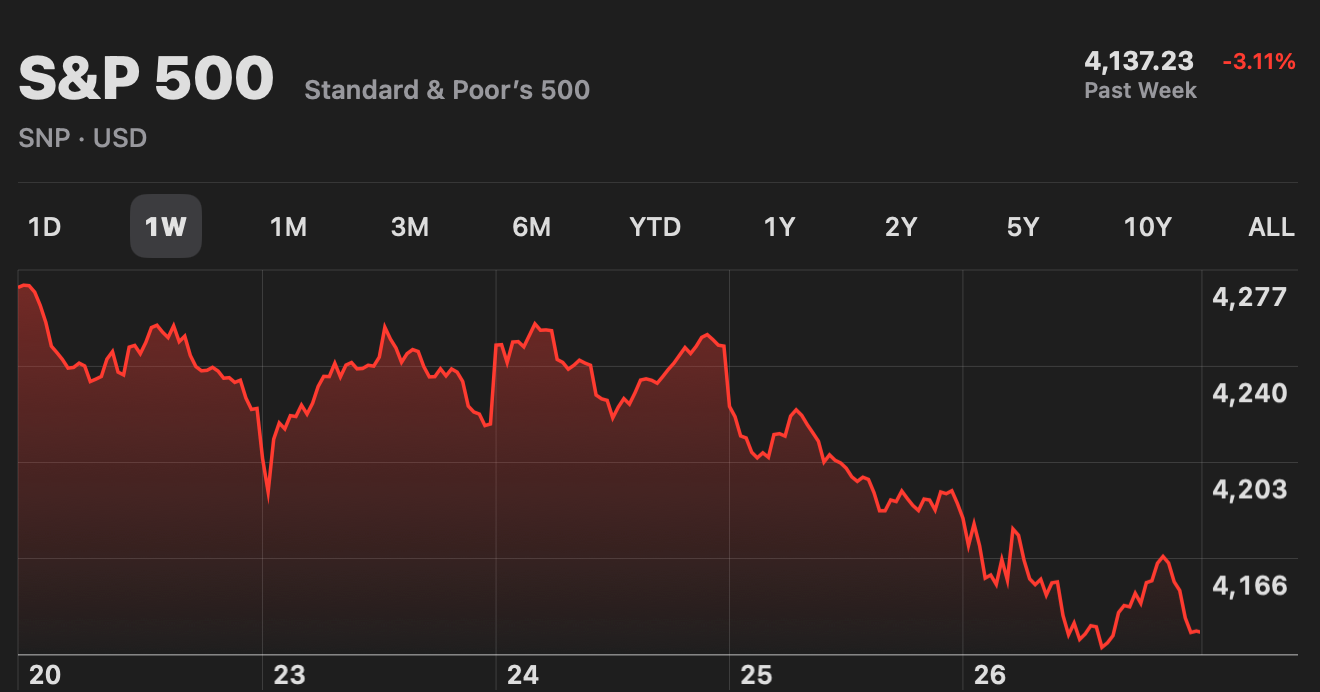Bidenomics At Work
-
You can see pitchers in the whole thread:
https://threadreaderapp.com/thread/1710301675234234566.html
Latest Jobs Report looks good w/ headline numbers blowing away expectations, but the devil is in the details - here's a plain-English thread on why this is a very troubling report🧵...
First the headlines:
Sep nonfarm payrolls jump 336k; Unemployment rate flat at 3.8%; Labor force participation rate remains depressed at 62.8%; Those not in the labor force rose to roughly 5 million more than pre-pandemic - this is artificially pushing down unemployment rate:There are various ways to account for the people missing from the labor force (4.5-5.4 million) and doing so yields an unemployment rate between 6.3 and 6.8%
Where were the jobs added in Sep? 22% came from government - an unsustainable increase; remember that private sector workers have to support those public sector jobs:
What kinds of jobs were added? Entirely part-time (+151k); in fact, we LOST full-time jobs (-22k); last 3 months have seen part-time jump 1.2 million while full-time fell 700k (most since lockdowns); double counting of multiple jobholders (123k) was 37% of job gains...
Who has the jobs? Let's break it down a few ways; first, foreign-born workers are already back to pre-pandemic trend while native-born workers have never recovered; since Mar '22, jobs disproportionately went to the foreign born, which brings up another important point...
Something broke in the labor market in Mar '22; the household and establishment surveys began to diverge and full-time job gains slowed dramatically; this continues today as nonfarm payrolls (establishment) jumped 336k in Sep, employment level (household) only rose 86k:
But back to who has the jobs, it's college grads, in spades: unemployment rate 2.1%, employment level 63 million (inline w/ pre-pandemic trend), emp-to-pop ratio 71.9%, and their earnings are outpacing inflation - why would you give this group a student loan bailout?
Lastly, the loss of full-time jobs and their replacement w/ part-time work is helping slow wage growth, which is then negative after adjusting for inflation - real weekly earnings fell dramatically until Jun '22 and have moved sideways since:
TLDR: people supplementing incomes w/ part-time jobs are goosing the headline numbers while underlying economic fundamentals remain weak; people absent from workforce pushing down unemployment rate; earnings not keeping up with inflation; don't expect the job gains to last...
@George-K said in Bidenomics At Work:
don't expect the job gains to last...
I thought there was some desire to not have very high job gains?
Too many jobs added, economy still going too strong, Central Bank increases interest rates to slow it down
So, wouldn't it be good to have the job creation slow down a bit?
-
@George-K said in Bidenomics At Work:
@Jolly said in Bidenomics At Work:
A lot of second jobs is not an indicator of a strong economy.
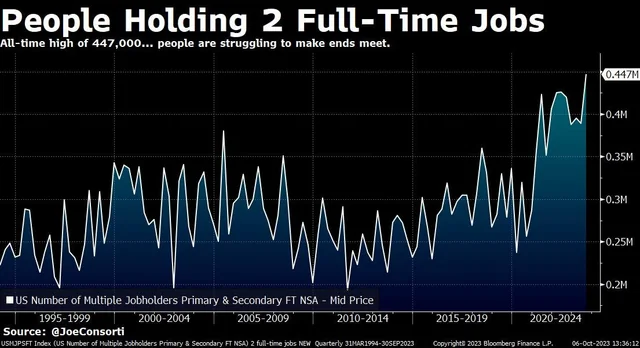
Im a glass half full person.
According to US government, 134.56 million people hold a full time job.
0.447 million hold 2 full time jobs.
That is only 0.3% of the working population.
It looks like the history average for two full time jobs is about 0.3 MM
So, the % of people holding 2 full-time jobs has increased from 0.2% of the population to 0.3% of the population.
The % of people having only one full-time job has decreased from 99.8% to 99.7%. Still doesn't seem too bad.
(Of course, easy for me to say, as I am not one of the 150K people who have had to get a second full time job)
-
@Rich said in Bidenomics At Work:
a decent little house in the $250-275k range
Three years ago, a conventional (30 year) 80% mortgage on that house would have cost you about $1137 a month.
Today, the same loan is $1746. More than $7,000 a year more.
@George-K said in Bidenomics At Work:
Three years ago, a conventional (30 year) 80% mortgage on that house would have cost you about $1137 a month.
Today, the same loan is $1746. More than $7,000 a year more.
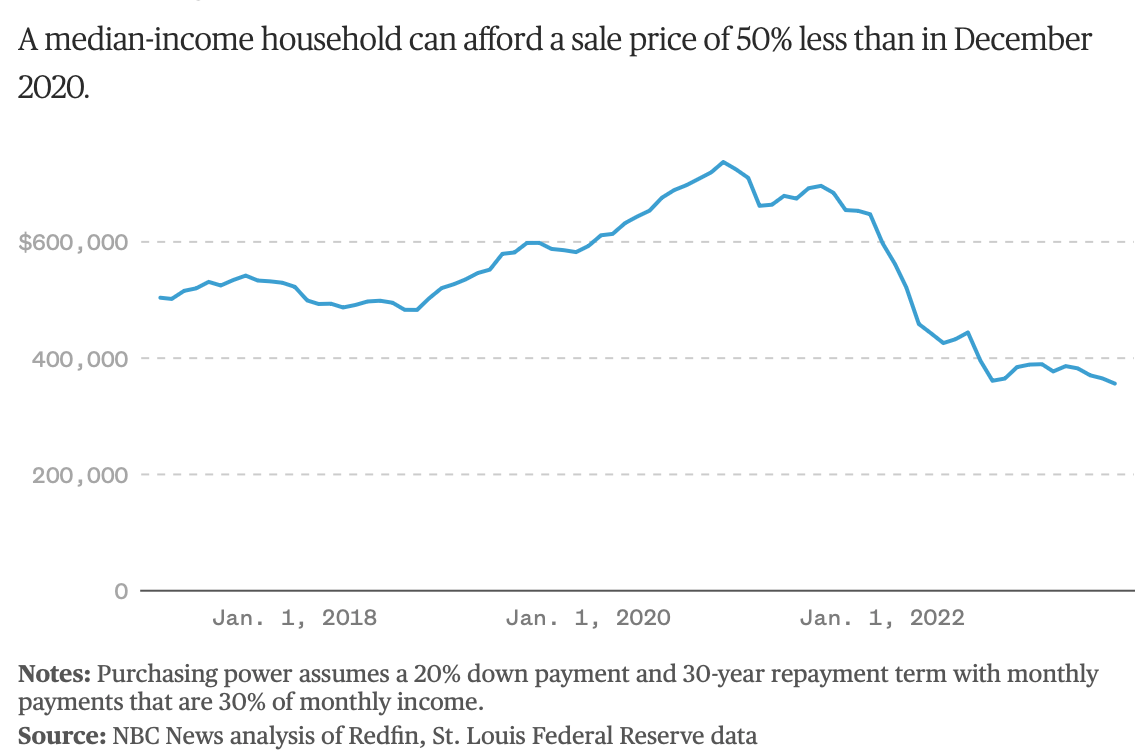
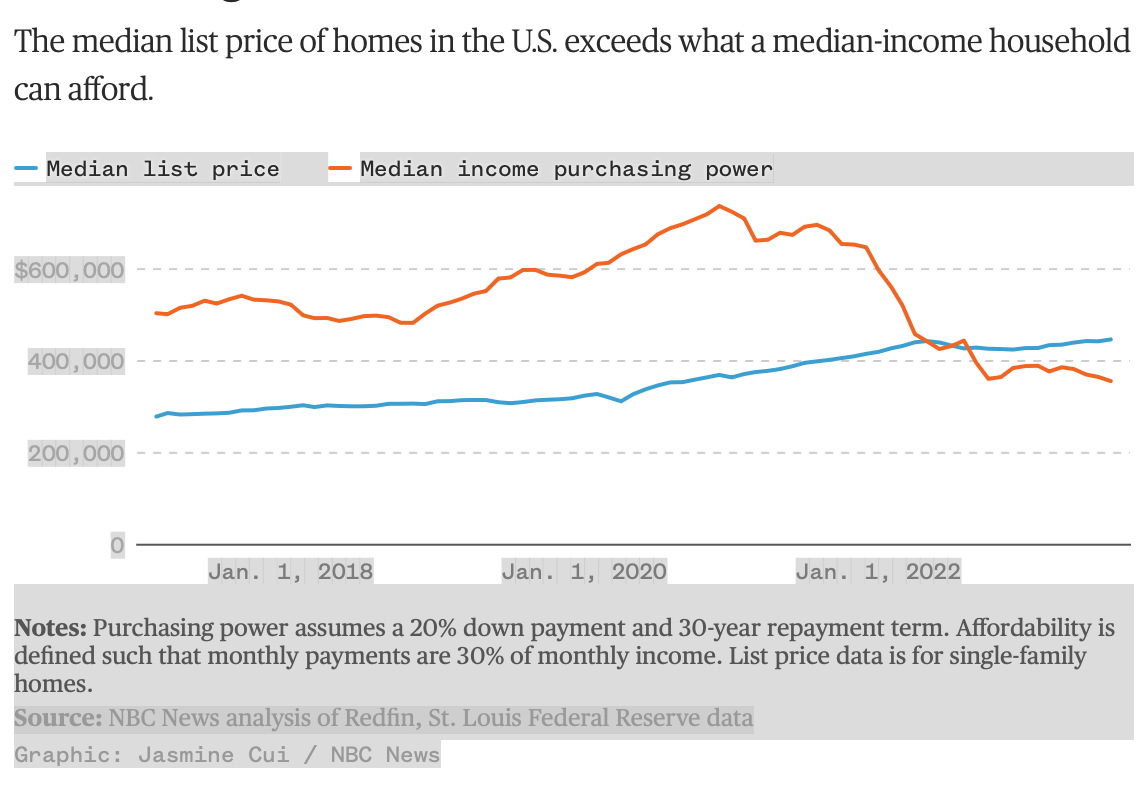
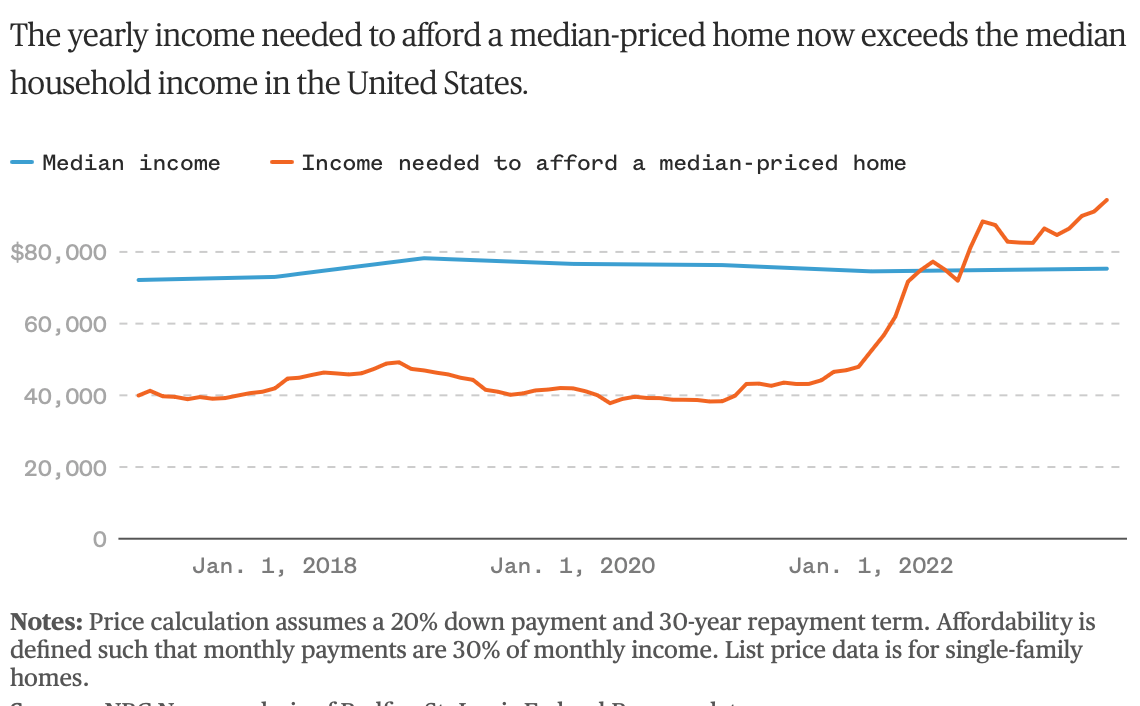
-
The U.S. economy grew at a blistering pace over three months ending in September, more than doubling growth in the previous quarter ...
.
U.S. GDP grew at a 4.9% annualized rate over the three-month period ending in September, accelerating from a 2.1% annualized rate over the previous quarter. ... -
LOL, listening to a local news & traffic station (WTOP) not 5 minutes ago, and their financial guy came on and said “Enjoy it while it lasts! A surprising GDP of 4.9% was fueled primarily by Government and Consumer spending… Expect next quarter to be down around 1% and many analysts are predicting a coming recession…”
WTOP is not a right leaning news station and it s not in the doom business…
-
LOL, listening to a local news & traffic station (WTOP) not 5 minutes ago, and their financial guy came on and said “Enjoy it while it lasts! A surprising GDP of 4.9% was fueled primarily by Government and Consumer spending… Expect next quarter to be down around 1% and many analysts are predicting a coming recession…”
WTOP is not a right leaning news station and it s not in the doom business…
@LuFins-Dad said in Bidenomics At Work:
LOL, listening to a local news & traffic station (WTOP) not 5 minutes ago, and their financial guy came on and said “Enjoy it while it lasts! A surprising GDP of 4.9% was fueled primarily by Government and Consumer spending… Expect next quarter to be down around 1% and many analysts are predicting a coming recession…”
WTOP is not a right leaning news station and it s not in the doom business…
My son gets to talk with people at the larger telecom companies and he still has friends at the fruit company. Some of those businesses think we have already entered a recession and the numbers just haven't caught up, yet.
That would jibe with the above WTOP statement.
-
Behind a paywall, but I see it on Apple News:
On paper, 2023 looks like an incredible year so far for the US economy.
The unemployment rate is at 3.8%. The US economy added a robust 336,000 jobs in September. The S&P 500 is up 7.6% year-to-date. And GDP grew a staggering 4.9% year-over-year in Q3. All of that happened in spite of the Federal Reserve's aggressive rate-hike campaign.But Societe Generale Chief Global Strategist Albert Edwards, who called the dot-com bubble over two decades ago, urged investors to look beneath the headline numbers. Doing so reveals a more chilling reality of where the US economy really stands at the moment.
"I'm very much a macro-man, but I recognize that the macro data is disguising the depth of pain the Fed has inflicted on the economy, which will soon be obvious to all," Edwards said in an October 26 note.
Start with bankruptcy data, Edwards said. Year-to-date, bankruptcy filings are higher than during any year since 2010.
They're also up 61% this year alone. And it's worse for smaller firms, which have smaller cash reserves and are more sensitive to higher interest rates.
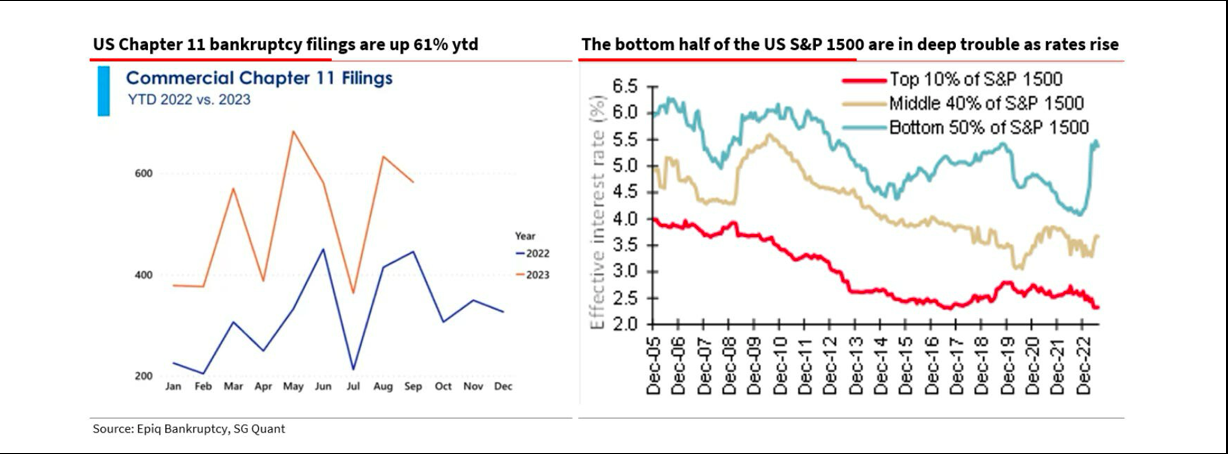
"Bankruptcy experts think many companies are on the brink. Post-GFC QE and direct Covid pandemic relief certainly kept many zombie companies on extended life support," Edwards said. "But now the sharp rise in rates is causing a surge in bankruptcies beyond one's worst Freddie Kruger nightmares."
And then there's weak analyst optimism. Only about 40% of analyst ratings changes for S&P 500 companies are upgrades. Edwards says in new economic cycles that number is typically 60-70%.
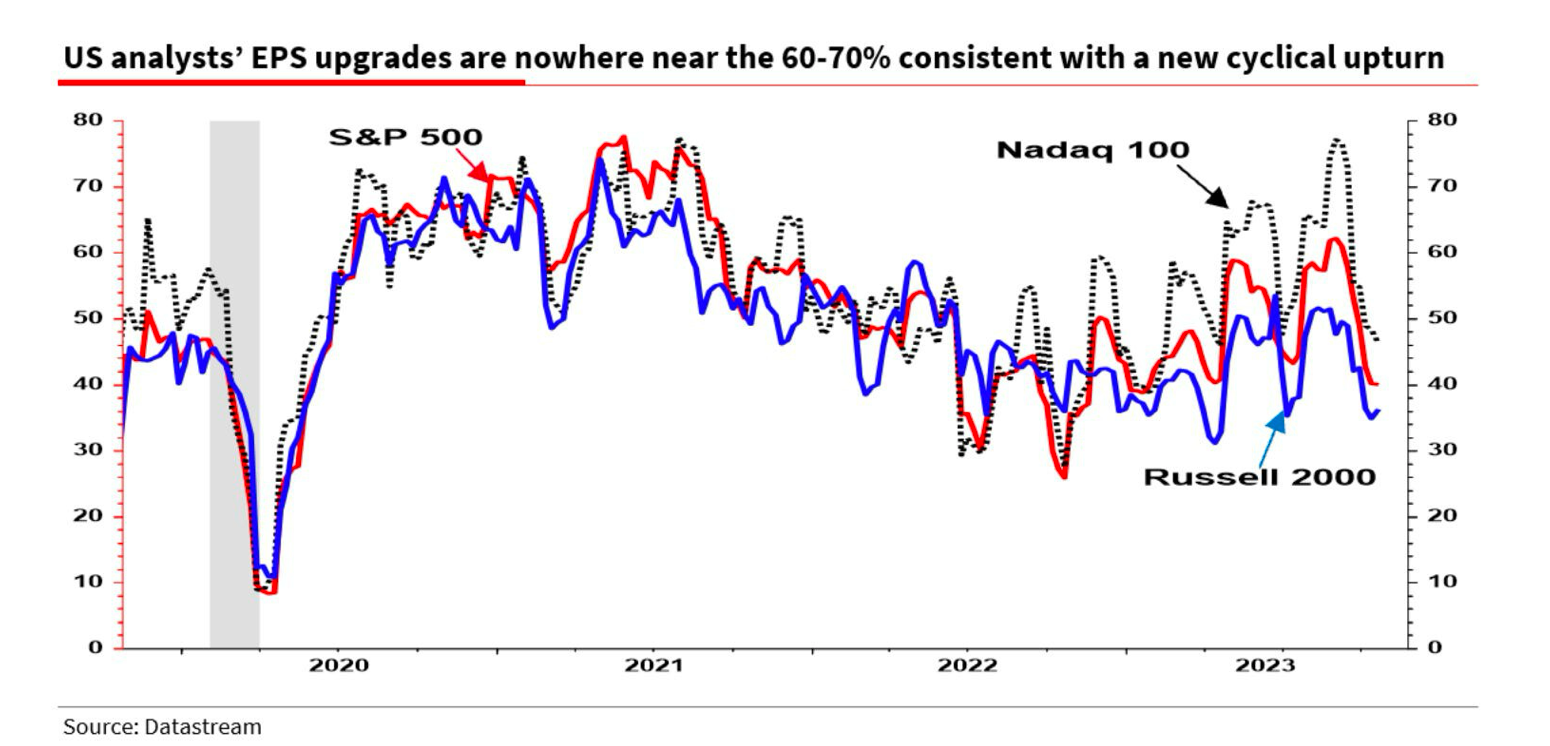
Credit conditions for small businesses are also in dangerous territory. Credit conditions refer to how easy it is for a business to get a loan. The National Federation for Independent Businesses' index on small business credit conditions is right at levels seen at the start of prior recessions, Edwards pointed out.
This typically means lower profits and softening in the labor market, he said.
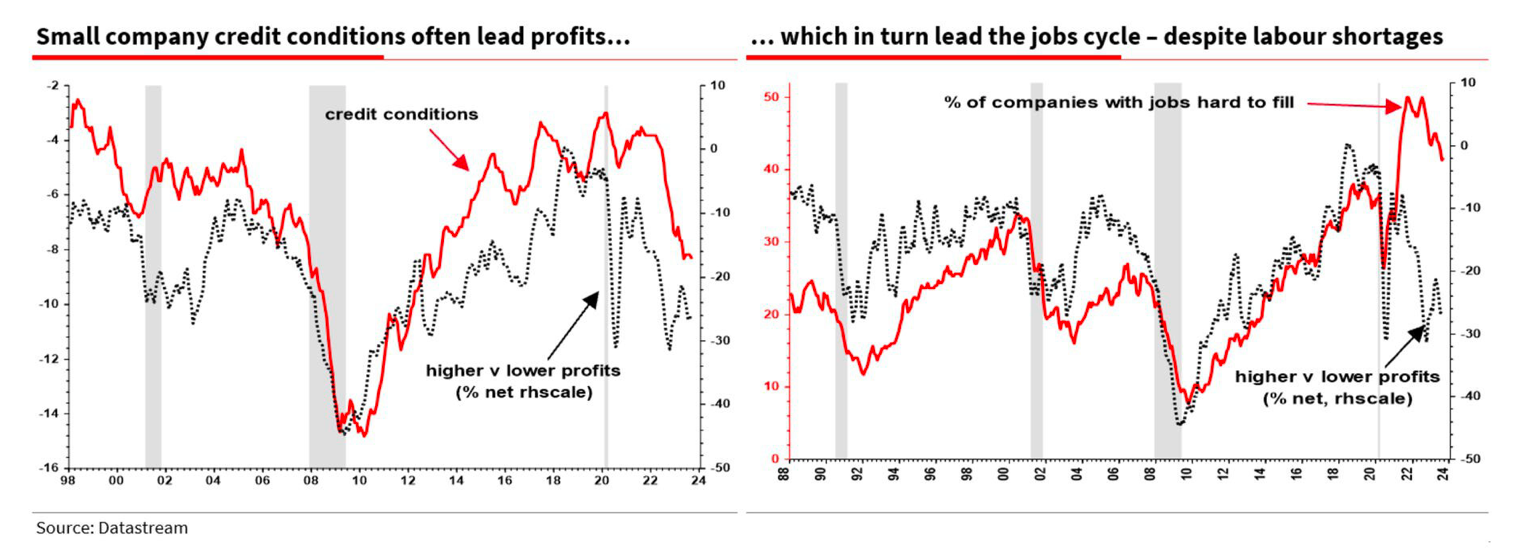
"The notion that we are at the start of a new economic cycle seems preposterous to me," Edwards said.
Is a recession really coming?
It's getting harder to say a recession will arrive in the near future as the economic data continues to come in strong.
Yet classic leading recession indicators continue to suggest that weakness still lies ahead.
The Institute for Supply Management's Purchasing Manager's Index, which takes the pulse on manufacturing activity in the US, is in contraction territory. The Conference Board's Leading Economic Index — which bundles indicators like consumer sentiment, manufacturing activity, stock and bond market performance, housing market activity, and lending activity — has been in recession territory for months now. And the Treasury yield curve remains inverted, with 3-month yields higher than those on the 10-year. The latter two indicators have a perfect track record over the last several decades of preceding recessions.
But the current economic cycle is in many ways unprecedented, given the massive amounts of stimulus pumped into the global economy over the last few years and the vast labor shortages the US economy has now with over nine million open jobs. These could mean the US could stave off a recession despite the warning signs.
However, the longer the Fed keeps rates elevated, the higher the risk of a recession becomes. While inflation has come down significantly, it's shown a small resurgence in the last few months, perhaps necessitating a continually hawkish Fed.
-
Dumb question...When we talk about GDP, are those in today's dollars? Or are those figures in terms of steady dollars?
Second dumb question...Does anybody know how how many people are working more than one job, trying to hang onto their home, their car and to keep the lights turned on?
